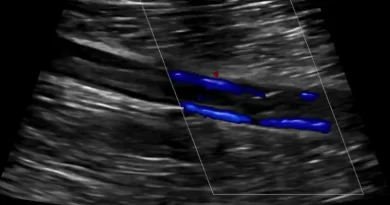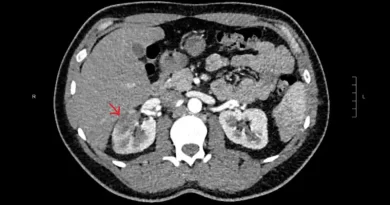Causes of Blood Clots in Legs
If you have a blood clot in your leg vein, you need to focus on two things. First, treatment. But second, understanding the cause. There are different causes of blood clots in legs and sometimes treatment changes depending on the cause.
We Divide Causes of Blood Clots in Legs into Groups
The most important way we divide the reasons for blood clots in legs is to the following three groups:
- Provoked – This means we know the reason for the clot. A typical example will be major surgery. For instance, a blood clot that happened after hip replacement surgery.
- Unprovoked – This means we cannot find a specific cause. A person was basically living their normal lives when the clot happened.
- Provoked by cancer or some types of antiphospholipid antibodies – Many of you may know that many cancers cause blood clots. Because the association of cancer and blood clots is so powerful, we tend to think of these separate than the other groups.
The reason we divide clots this way, is because it helps us think about recurrence risk. The recurrence is lowest after a transient cause. For instance, after surgery. Risk increases if we cannot identify a cause. And it is highest for cancer or in some types of antiphospholipid antibody syndrome.
Sometimes We Cannot Define the Cause
Often we cannot place a person’s event into a specific box. For instance, blood clots after flight. On the one hand, we know that most people who fly don’t get clots. So maybe we should call this “unprovoked”. But on the other hand, we also know that more people get clots after flight compared to people who have not flown. So perhaps this is “provoked”? Questions like these come up in real life all the time.
Other common scenarios when we cannot really define a clot as “provoked” or “unprovoked” include a long car ride and a short illness.
Causes we Can and Can’t Change
There is evidence for some causes for blood clots that we can and other that we cannot change. For instance, men are at higher risk than women. Also, we have a higher risk for clots as we age. So age over 40 is a known risk factor.
On the other hand, some things we can change, to a degree. For instance, immobility and obesity might be impossible to address for some people, but other people might be able to improve on both.
Why Know the Causes of Blood Clots in Legs?
This question may sound basic. But it is not as clear as you might think. This is because we basically start treating most clots the same: with blood thinners. Still, knowing the cause has several important implications:
- Duration of therapy – If a clot happens because of a specific reason, and that reason has resolved, then we can probably treat for a short period of time. Indeed, medical guidelines suggest 3 months of anticoagulation when there is a reversible reason for the clot.
- Type of therapy – Not all blood thinners are made equal. So sometimes we will choose one over the other to pair with a specific cause. For instance, if the cause was cancer, we will avoid Warfarin. But if the cause were antiphospholipid antibodies, we might actually favor Warfarin.
- Preventing another clot from happening – For instance if a person has a tendency to clot after surgery, we might pay particular attention to that risk if they need another surgical procedure.
Some Specific Causes of Blood Clots in Legs
A few specific causes of blood clots in legs are worth mentioning in more detail.
Cancer and Blood Clots
Many people worry that a clot is the first sign of cancer. Indeed, the chance of finding cancer after an unprovoked clot is as high as 10% over the first year. Still, we do not recommend to cancer screening after venous thromboembolism. It just does not work.
Most doctors and medical societies recommend age appropriate screening for cancer. Examples of age appropriate screening include mammograms and colonoscopy. Also, if a person has a specific symptom, we should never ignore that.
Genetic and Blood Factor Causes of Blood Clots
The normal clotting mechanism in our body happens through specific genes and blood factors. When there is an abnormality in one of these factors that can cause clots, that is called thrombophilia. While it is true that the presence of thrombophilia is associated with more clotting, thrombophilia testing is generally not recommended. It simply does not help with treatment decisions.
At first, this might not make sense. But here are a couple of examples that might help. Imagine someone who had an unprovoked clot. They will need long-term treatment whether we can identify a defective gene or not. So knowing about the gene just won’t change management. Another common example is family history of clotting. We know that first degree relatives of people who had unprovoked clots are at risk for clots themselves. This is true whether we can identify the cause or not. So again, usually, it does not matter to test.
Of course, there are exceptions to the rule. For instance, not all children will inherit a parents tendency to clot. Or sometimes we need to discuss risk of pregnancy and knowing the specific cause matters for that.
Surgery and Injury: Provoked Causes of Blood Clots in Legs
If a blood clot happens, that is never good. But of the causes of blood clots, blood clots after surgery or injury probably have the best implications. This is because we know that these clots have the lowest chance of coming back once treatment is over. So usually, we will treat for 3 months and at the end of this time, most people can stop taking blood thinners.
Pregnancy
Pregnancy causes blood clots in several ways. But the most central is through elevated estrogen. Another, less common, cause for clots in pregnancy is compression of veins. The most typical would be compression of the iliac vein by the overlying iliac artery. This is also called May Thurner Syndrome.
Immobility
Chronic immobility is common. In fact, as the population ages, more people end up in long-term care facilities. We know from Wirchow’s triad, that immobility is an important risk for clots. Still, it is not customary to given chronically immobilized patients blood thinners to prevent clots. The reason is, of course, the side effects of this treatment. Chiefly, long-term blood thinners will result in bleeding in some people. Still, some immobilized people will develop clots. Knowing how to address these clots is not a simple task.




Pingback: Blood Clots in Legs: Causes, Diagnosis and Treatment
Pingback: Wirchow's Triad: Real World Implications
Pingback: Varicose Veins and Thrombosis: Is there a Connection?